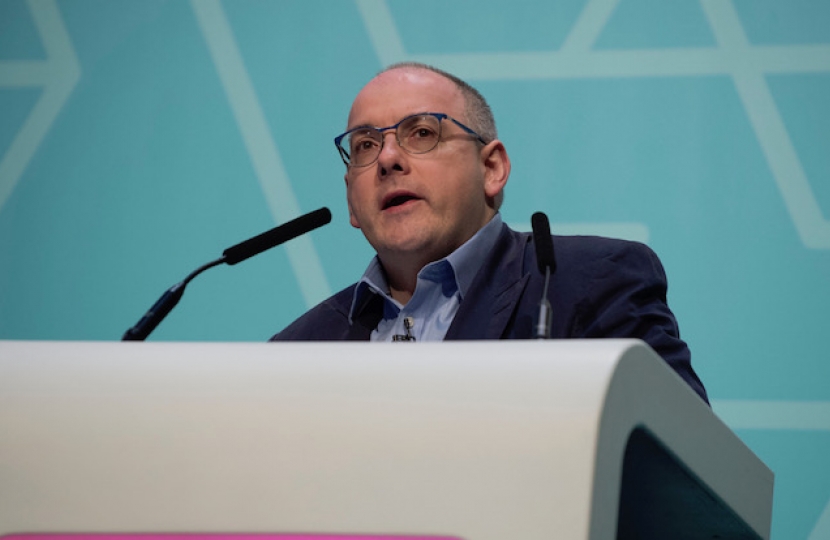
First published in The Telegraph, 20 April 2020:
Covid-19 has dealt a hammer blow to the prospects of our most disadvantaged learners. Faced with the already daunting prospect of an 18-month attainment gap by the time they sit their GCSEs, these individuals must now grapple with the very real prospect that they will fall further behind.
It is a sobering predicament.
All the hard work that has been done in recent years by parents, policy makers, charities, companies, philanthropists – the coil of progress they have wrapped tightly around the promise of a better future for these children – risks unravelling at a frightening pace.
The reason for this is that learning under lockdown is harder for disadvantaged pupils than it is for their peers.
These children have poorer digital access. According to a recent Teacher Tapp survey of 6,000 teachers, only 2 per cent of teachers in our most disadvantaged schools believe all their pupils have access to adequate devices for online learning. Teachers in the most disadvantaged schools are 6 times less likely to think that all their pupils have adequate access to the internet than those in the most affluent schools. And one headteacher in my own Harlow constituency informed me that 8 per cent of their pupils do not have access to the internet.
Many also live in challenging home learning environments. One headteacher mentioned that in the first two days of lockdown, they had made two referrals to social care following calls from the police about domestic violence at pupils’ homes. 55 per cent of teachers from the most disadvantaged schools think the average pupil in their class is learning for less than one hour a day. And many vulnerable children who are still allowed to attend school are just not turning up – while teachers do a brilliant job looking out for these children, some will inevitably fall through the net.
The damage done to pupils when they are not learning is well known. And a strong body of literature suggests that school closures adversely affect disadvantaged pupils more than their peers; even relatively short absences, including over school holidays, can start to sap progress.
In this context, it seems clear that, if schools stay closed much longer and we do nothing more to support disadvantaged children, a wave of lost potential will come crashing down on them.
So, what can we do to avert this?
First, we must continue to improve digital access. Most schools do not have dozens of laptops lying around to lend out. But many of our leading businesses do, or have the wherewithal to purchase them. This is already happening in the north, where the Northern Powerhouse Partnership is doing the right thing and working with businesses like EDF, which has committed to donating laptops in the communities in which they are based.
It is fantastic that the Education Secretary has announced laptops and 4G modems for disadvantaged families, but the hardest part will be to get them into the homes of those children. And while the department is buying computers, it’s vital that businesses that have available technology donate it to schools. We need a UK-wide effort, and today I am urging as many businesses as possible to work with key local partners to support those schools with the most children in need.
While we can mitigate some of the unfolding damage, though, we cannot fully extinguish it. And once our schools open again, we will need to help disadvantaged pupils catch up.
The government should, therefore, commit to a “catch-up premium”, which schools could use to support disadvantaged pupils when they return. Suitable interventions would vary by case. But in many instances, schools would draw on charities that specialise in tutoring disadvantaged learners. The Centre for Social Justice, which has raised grave concerns about the attainment gap and the further damage Covid-19 will do, has an alliance of charities (including star performers like Action Tutoring and Tutor Trust) with ready-made models that could be scaled up.
We can also be confident that these interventions would have strong impact. Evidence from the Education Endowment Foundation shows that an effective tuition programme (which equates roughly to 30 minutes tuition, 3-5 times a week, for 6-12 weeks) confers around five additional months’ progress over a year. Such a programme would require about four days of teacher time – or around £700 per pupil.
And if we needed to keep costs down, we could draw on models in the charitable sector that already rely heavily on volunteers (including students, retired individuals and corporate volunteers) with impressive results.
We could build an army of helpers here, just as we have done elsewhere. A national “Catch Up!” programme to bring it all together. To broker all that goodwill so volunteers get to the right charities and schools.
Covid-19 has highlighted the richness of this country’s civil sentiment, and our extraordinary capacity to come together. Including the hundreds of thousands of volunteers who have rallied around our incredible NHS to help save lives – a feat that will surely take its place among our proudest national memories. Now let’s extend that sentiment to education and save the futures of our most vulnerable children.
